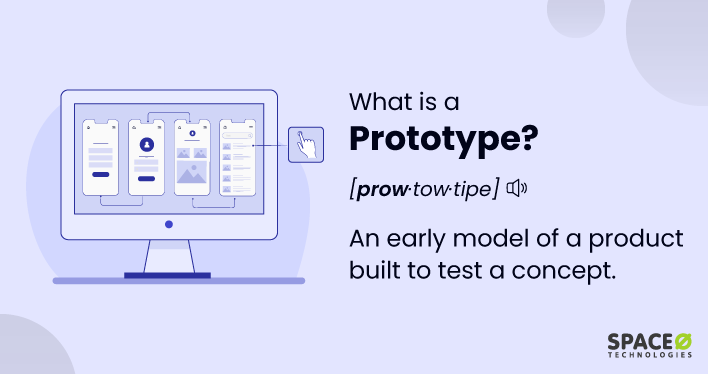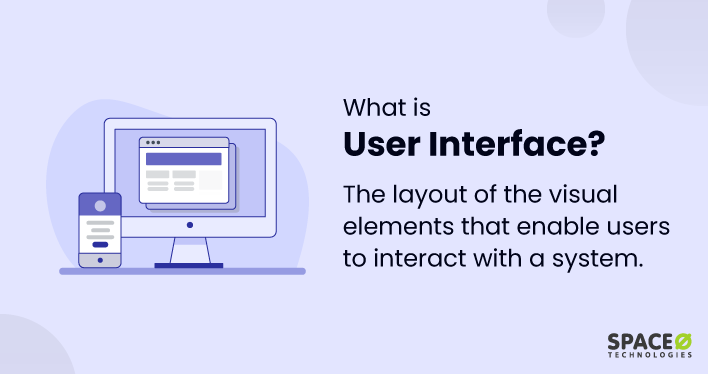Table of Contents
What is a Prototype?
A prototype is a preliminary model or representation of a product, system, or concept created to test and refine the design before it is finalized and produced. It is often used in the fields of engineering, design, software development, and other fields where a tangible or digital representation is essential for testing and validation.
Prototypes are crucial in the development process because they allow for:
- Identifying potential design flaws
- Testing functionality and performance
- Gathering user feedback
- Refining the design based on insights gained from testing
Overall, prototyping is the design process of creating a primary model to test the concept before creating a final design and finished product.
Why Should You Use a Prototype?
Creating a prototype can provide several benefits for your project. Some of the reasons why you should consider developing a prototype include:
- Reduces Risk: By identifying and addressing design flaws early in the product development process, you can save time, money, and effort in the long run, reducing the risks associated with producing a faulty product or system. This risk-mitigation stage comes after the development of wireframes, which provide a blueprint for the layout and structure of the product. For a deeper understanding of this crucial preceding step, here is a brief post on what is a wireframe. Reading this, you will know the definition, types of wireframes, and their importance.
- Provides Faster Feedback: A prototype, especially a high-fidelity prototype, allows users and product teams to quickly gather feedback on the design and functionality. By obtaining this feedback early in the development process, improvements can be made to the final product, ensuring that it meets user needs and addresses any potential issues. High-fidelity prototypes, which closely resemble the final product, are particularly useful in obtaining accurate and actionable feedback.
- Streamlines Communication: During the prototyping stage, a tangible or digital representation of your concept can help bridge the gap between designers, developers, and stakeholders. This stage makes it easier to discuss, refine, and understand the idea, fostering better communication and collaboration throughout the development process.
- Offers Iterative Design: Prototyping allows for iterative improvements to the design, paving the way for a more polished and thoughtful final product. This iterative process is especially important when considering aspects like web accessibility. It’s important to ensure that the design is inclusive and can be used by people with diverse abilities. To learn more about the importance of creating accessible digital products, explore our article on what is web accessibility. From this post, you will know its definition and importance.
Let’s check what are the steps to create a prototype.
How to Create a Prototype in 5 Steps
Creating a prototype involves several steps, which can vary depending on the project’s specific requirements. However, the general process is as follows:
Define Your Goals
Clearly identify the purpose of your prototype, such as prototype testing a specific feature, validating a design concept, or gathering user feedback. This will help you determine the appropriate type of prototype and the level of detail required.
Choose the Appropriate Type of Prototype
Based on your goals, select the type of prototype (low-fidelity, high-fidelity, physical, or digital) that best fits your needs. Low-fidelity prototypes are usually simple representations, while high-fidelity prototypes closely resemble the final product. Physical prototypes are tangible models, and digital prototypes are virtual representations.
Develop the Prototype
Use the appropriate tools and materials to create your prototype, ensuring it meets the project’s requirements. This could involve sketching or wireframing for low-fidelity prototypes, using CAD software or 3D printing for physical prototypes, or employing prototyping tools for digital prototypes.
Test and Gather Feedback
Present your prototype or in some cases a minimum viable product (MVP), to your real users to gather feedback and identify areas for improvement. Make sure to collect both qualitative and quantitative feedback to gain a comprehensive understanding of your prototype’s or MVP’s performance. By using this feedback, you can further refine your product, enhancing its functionality and better aligning it with user needs and expectations.
Iterate and Refine
Use the feedback and insights gained from user testing to make improvements to your prototype, repeating the process as necessary until you achieve the desired level of refinement. This iterative process helps ensure that your final product or system is more polished, effective, and better aligned with user needs and expectations.
3 Examples of Prototyping in Different Industries
Prototyping is used across various industries to improve products and systems. Here are a few examples:
- In automotive design, physical prototypes, often called clay models, are used to evaluate the aesthetics and aerodynamics of a vehicle before production.
- In software development, digital prototypes are created to test user interfaces, navigation, and functionality before coding the final application.
- In product design, designers may use 3D printing to create physical prototypes for ergonomic testing and user feedback.
In conclusion, prototypes are essential in the development process, allowing for more advanced testing and refining before finalization. They offer benefits such as risk reduction, quicker feedback, enhanced communication, and iterative design. By using a structured approach to create prototypes, developers and designers can achieve a polished and effective final product that meets user needs.




